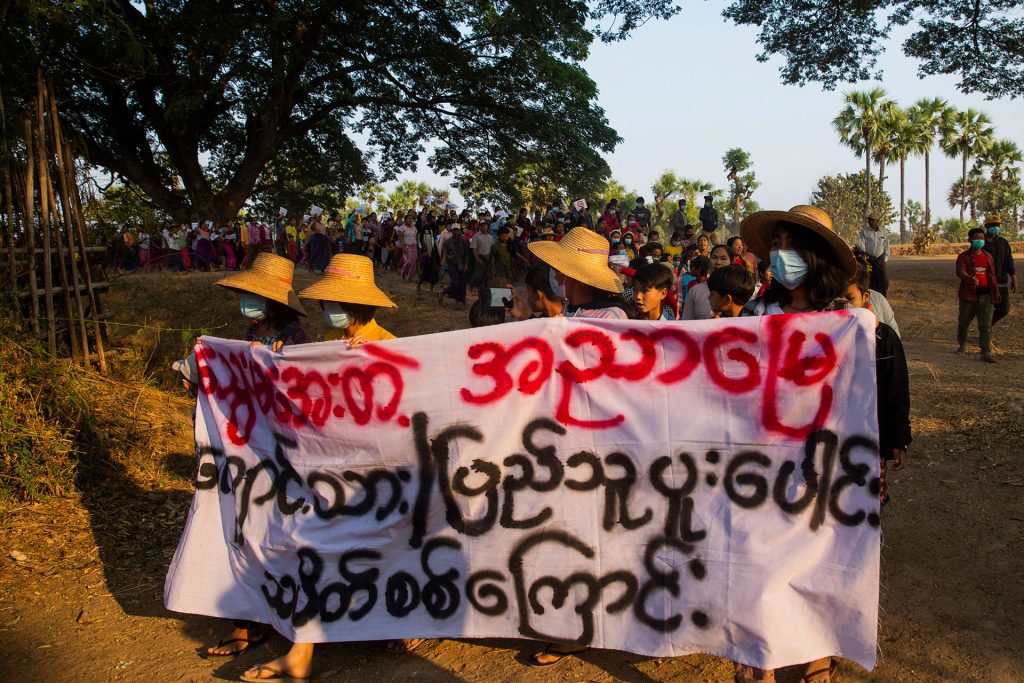Data Matters No. 26
(This article is a translation of the original Burmese language version that ISP-Myanmar posted on its Facebook page on June 25, 2022.)
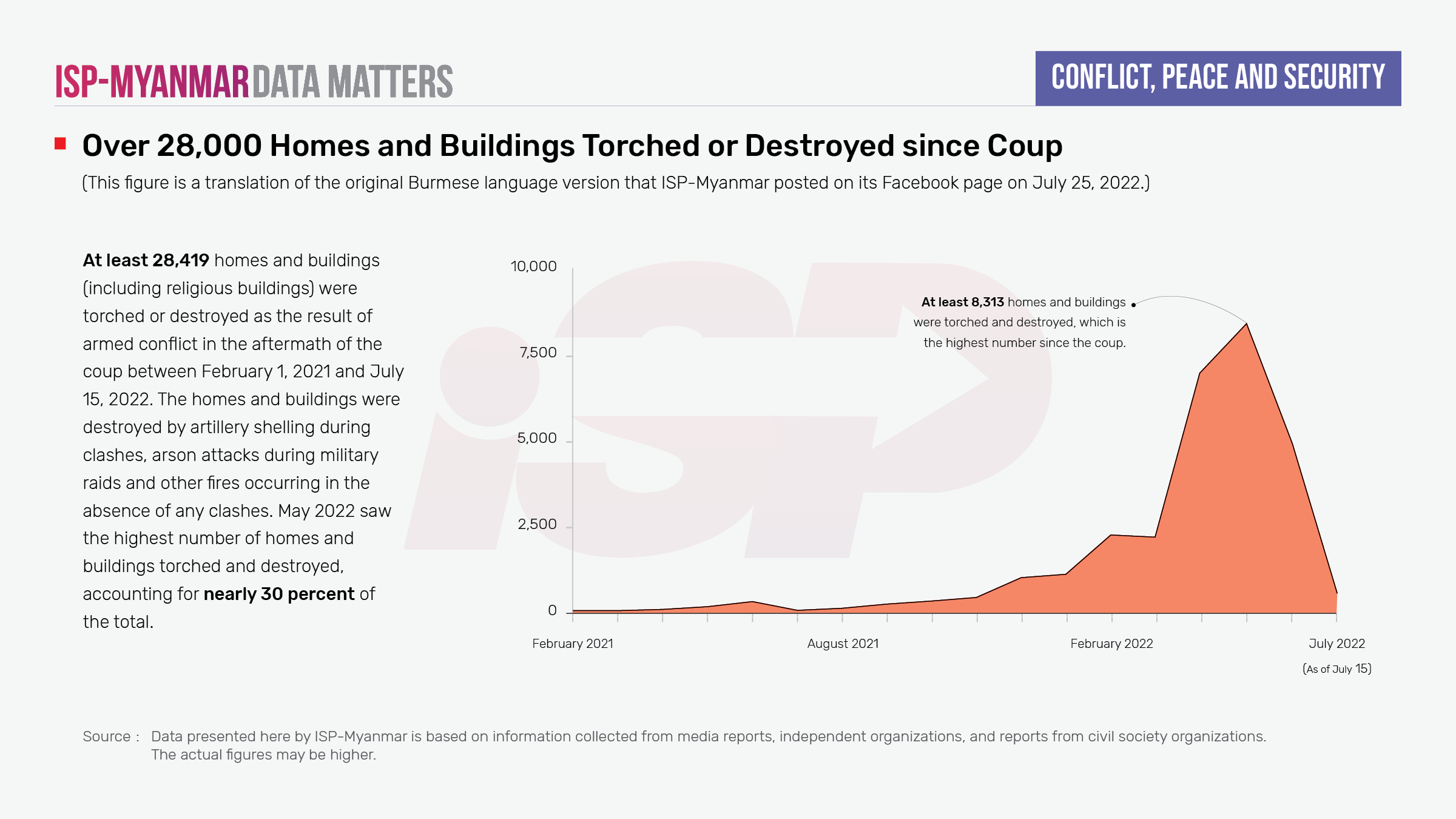
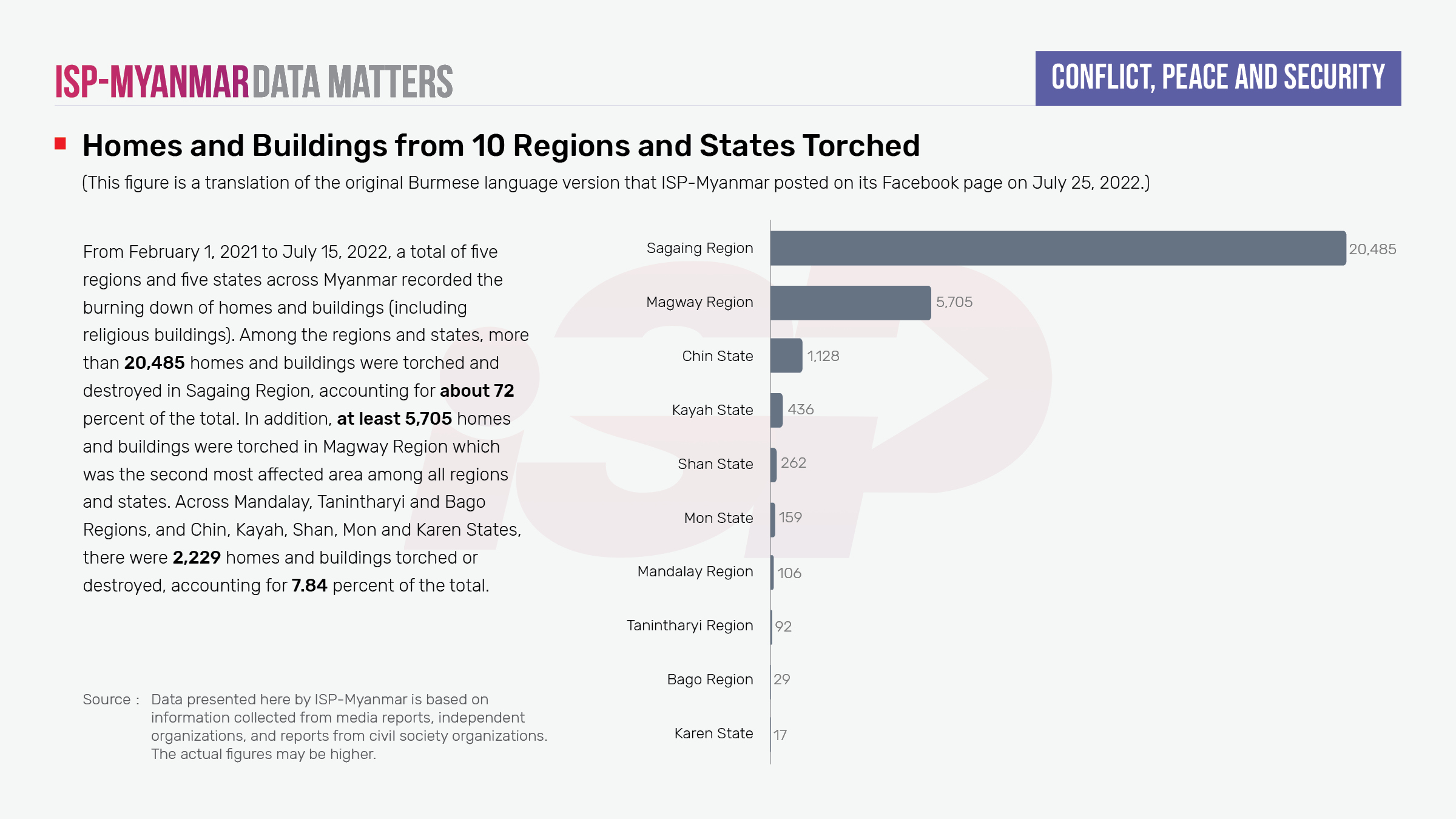
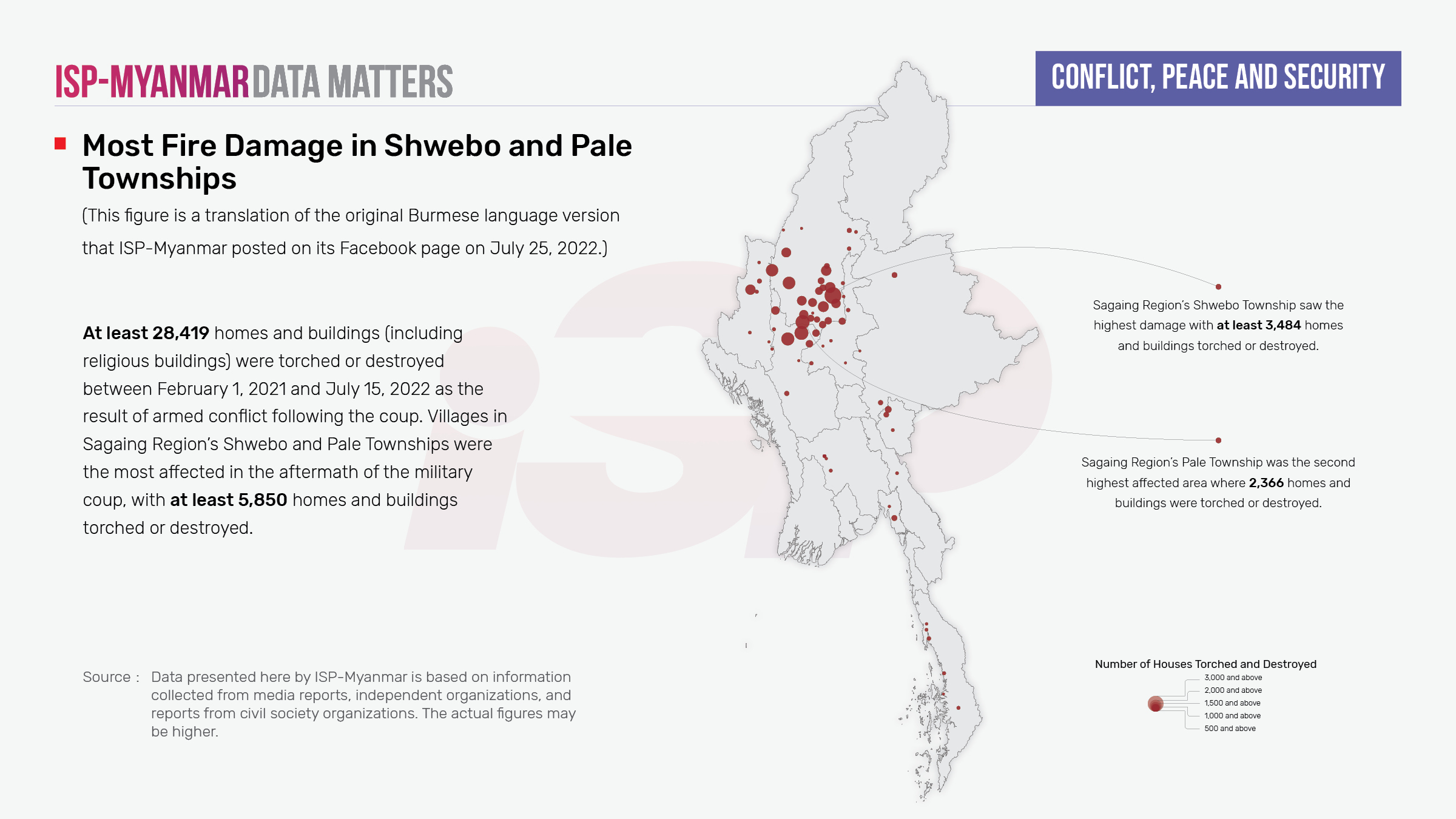
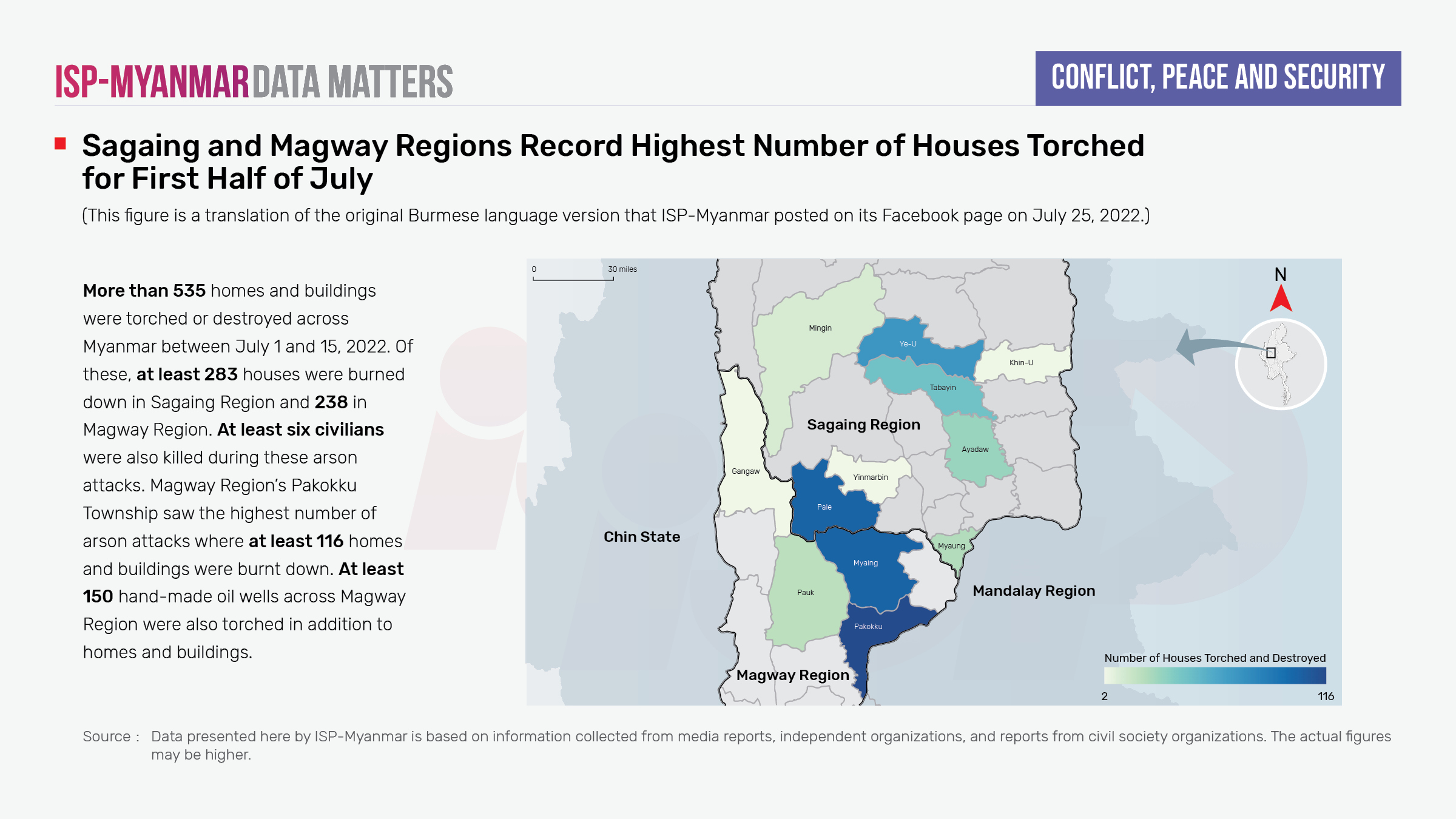
Artillery attacks and fire destroyed at least 28,419 buildings, including homes and religious structures, between February 1, 2021 and July 15, 2022. Sagaing Region saw the heaviest damage with about 20,485 houses torched or destroyed, accounting for about 72 percent of the total. The second highest affected area was Magway Region, where 5,705 buildings were torched or destroyed, accounting for 20 percent of the total. The remaining 2,229 buildings, accounting for 7.84 percent of the total, were torched or destroyed across Chin, Kayah, Shan, Mon and Karen States, and Mandalay, Tanintharyi and Bago Regions.
Villages in Sagaing Region’s Shwebo and Pale Townships were the most affected in the aftermath of the military coup, with at least 5,850 homes and buildings torched or destroyed. On a monthly basis, the number of homes and buildings that were burnt down as a result of the armed conflict which erupted after the military came to power was the highest in May 2022, accounting for nearly 30 percent of the total. In July 2022, at least 150 hand-made oil wells in Magway Region were burnt down in addition to homes and buildings.
∎ Why does it matter?
Studying the post-coup situation helps to determine if there has been a change in conditions related to Myanmar’s peace process. Examining the number of civilian fatalities and injuries, determining how they were killed or wounded, and establishing the number of people displaced by fighting also makes it possible to know whether or not armed forces have committed human rights violations from the perspective of transitional justice.
∎ Other relevant readings
On-the-ground reports from ethnic news organizations and other independent media groups provide regular updates about conflict situations, their impact, and the collateral damage in the aftermath of the military coup. These include reports of civilian fatalities, houses torched, and rising refugee and IDP numbers on the ground. In addition, records and reports by United Nations organizations such as the United Nations Office for the Coordination of Humanitarian Affairs (UNOCHA) and other independent local and foreign organizations also provide information about the ongoing conflict situation in Myanmar.

